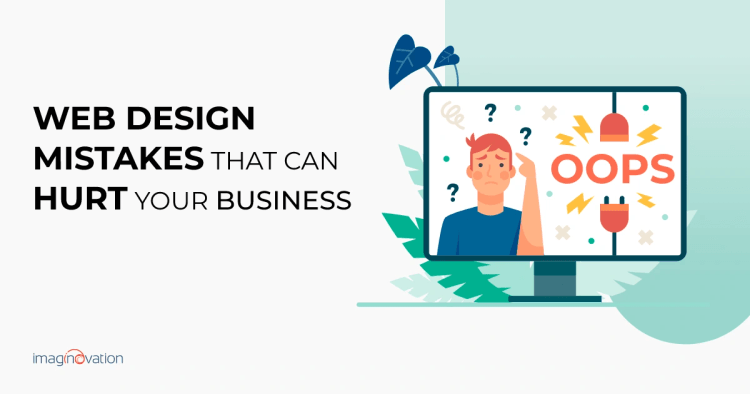Having a website is no longer an option for businesses; it is a critical requirement. Most importantly, the website you develop for your business must fulfill certain design standards.
A compelling website can help your business grab attention, engage customers, and establish credibility online. A website’s design greatly impacts how your potential customers perceive your brand.
Even the slightest glitch in design can drive users away. If your website looks outdated and unappealing, it can negatively affect your business.
Aiming toward creating a fantastic user experience with a well-designed website, let us review the web design mistakes that must be avoided and eliminated.
1. Non-Responsive Design
Let us first understand what responsive web design means.
In web design, responsive design is an approach to creating websites that work and look good on any device, whether it’s a large desktop screen, a laptop, a tablet, or the smallest smartphone screen. Responsive design optimizes a website to fit the user’s screen.
Today, many people use various smartphone devices in addition to computers to browse and search the web.
If your website automatically adapts to the visitor’s device, it allows users to spend more time browsing your site and keeps them engaged longer.
On the other hand, a non-responsive or unresponsive website:
- Poorly impacts the user experience.
- Generates a poor web layout when different devices are used for browsing, leading to poor readability and low-quality images.
- Is difficult to navigate.
- Is not mobile-friendly.
How can we avoid creating a non-responsive design?
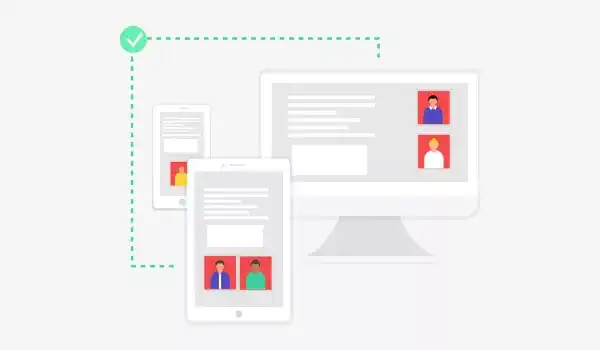
Try using a mobile-first approach when creating a new website. Make sure the website elements load perfectly on small screens, and then work your way up to larger screens, like tablets and laptops.
Place a strong emphasis on creating quality user interfaces and experiences (UX/UI) for mobile devices.
Web developers can use tools like Media Queries and CSS3 Modules to hide, show, move, or adjust the size of content according to screen resolutions and device sizes.
2. Disruptive Pop-ups
Many of us stumble upon pop-ups while web browsing. They appear suddenly, asking if you need help or prompting you to subscribe or download.
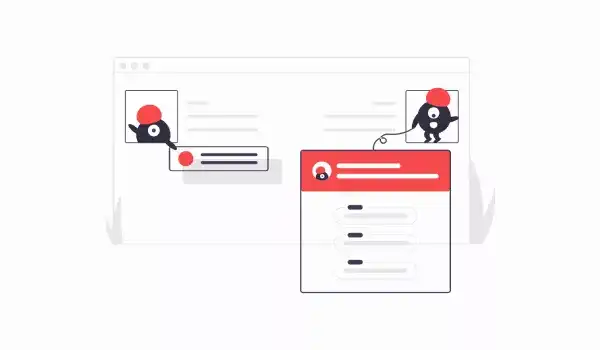
However, rather than being helpful, many users find them annoying because they obstruct the view and disrupt navigation.
Apart from this, there are many other reasons why users dislike pop-ups:
- Pop-ups can distract and confuse visitors.
- They can lower UX.
- Many users perceive them with suspicion, thinking of them as malware.
- They force users to take action.
- They can lead to a high bounce rate when users who don’t want to deal with them leave the site.
- They can damage a brand’s reputation if not used carefully.
- They look terrible on mobile devices if not designed with care.
Despite all the reasons mentioned above, many companies still use pop-ups because:
- Pop-ups catch website visitors' attention.
- They help to keep visitors on the webpage longer.
- They stop visitors from exiting the website immediately.
- Pop-ups have ROI potential.
Pop-ups get conversions. In 2020, the average conversion rate of pop-ups was calculated at 3.09%.
They are versatile and can be used at various points—upon entry, after scrolling to a certain point, right before exiting, or triggered by a specific action.
But they can also lead to poor user experiences, so you need to be extra careful when implementing pop-ups on your website.
How can we avoid making mistakes in the use of pop-ups?
- Follow Google’s rules for pop-ups on mobile devices and create non-obtrusive, device-specific pop-ups.
- Add pop-ups only when they offer something of value to visitors. Don’t waste visitors' time with meaningless disruptions.
- Don’t be lazy when designing pop-ups. Make sure they are as good as the rest of your website.
- Ensure that pop-ups are responsive.
- Be minimalist in collecting visitors' contact information and deciding the content for pop-ups.
- Avoid showing pop-ups immediately after the visitor starts navigating.
- Always include an easy way for the visitor to exit the pop-up by placing an “X” button in the top-right corner.
- The right timing of your pop-ups can create the perfect on-site experience for your visitor.
It’s also important to ensure that the pop-ups are placed in the right location on your website:
- Intrusive pop-ups can be placed in the center of the screen.
- Pop-ups with special offers can be placed with a sticky bar.
- If visitors need some time to contemplate while navigating, pop-ups can be placed to the side.
Lastly, be selective—don’t show pop-ups on every single page of your website.
3. Content Isn’t Scannable
Have you noticed that we tend to read slower on the screen than in a printed book—almost 25% slower? In fact, we don’t even read online—we skim.
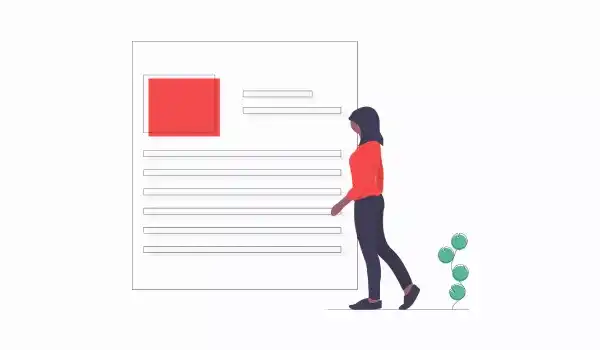
Web content has to be scannable because visitors don’t have the patience to stay on a single website for too long.
When they land on a website with walls of text, it can be an intimidating and tedious experience. Nobody likes to read through walls of text.
Also, other distractions on a website—such as photos, hyperlinks, animations, and videos—compete for the visitor’s attention.
Writing content for a website is different from writing for print material, so it should be easily scannable.
How can we avoid writing content that is not scannable?
- Avoid unnecessary details.
- Follow a simple writing style.
- Keep content short and to the point.
- Use subheadings, bulleted lists, short paragraphs, and highlighted keywords.
- Use pictures with smaller captions to convey points.
- Add sufficient white space to prevent the screen from looking crowded.
- Provide links to additional information when needed.
4. Auto-Playing Video with Sound
Adding videos to websites is helpful. If used appropriately, videos can capture a visitor's attention and drive conversions.
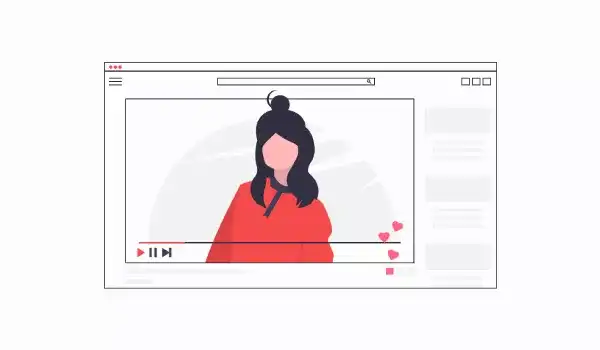
However, what’s not okay is to auto-play a video on your website without the consent and expectation of the visitor.
Auto-playing videos are acceptable on websites covering news or sports, where visitors expect them. But it’s frustrating when visitors click on a page, and a video starts playing unexpectedly.
Instead of looking for the mute option, many visitors will leave the page immediately.
What’s the solution?
Remember, nothing should be pushed on users—therefore, auto-playing videos with sound may seem like an aggressive approach.
Perform an A/B test for two versions of your video—one with auto-play and the other where users control the video.
If you must auto-play a video, mute it. Learn from how Twitter and Facebook use silent auto-play videos where users must manually activate the sound.
5. Navigation Issues
In an age where everything is delivered instantly, anything slower will make people abandon your website.
Website navigation allows visitors to move from one page to another without frustration. If your website has issues within its navigation, users will not find your content. No content discovery will mean no conversions.

Let’s take a look at how we can avoid making navigation mistakes in our web design.
How can we avoid making navigation mistakes?
- Make hypertext in your website obvious – Visitors should be able to tell a hyperlink from body text—format it in a different color, boldface it, or underline it.
- Sidebars shouldn’t look like the rest of the web content. They should stand out.
- Streamline the navigation bar—remove clutter and follow a structure.
- Use a simple and clear approach when naming hyperlinks.
- Ensure the website’s navigation is responsive on mobile.
- Use buttons only for CTAs—Calls to Action.
- Use evaluation tools meant for checking how your users are navigating the website.
- Ensure the color of visited links changes so visitors can track where they’ve been and where they are.
- Avoid using uncontrollable navigation, such as animation that rolls, bounces, or moves while users are trying to read something on your website.
6. Slow Loading
If your website takes more than four seconds to load, it’s too slow. For mobile, the ideal website load time is one to two seconds.
Elements in your web design have a considerable impact on page load time, and, in turn, affect your website’s SEO ranking.
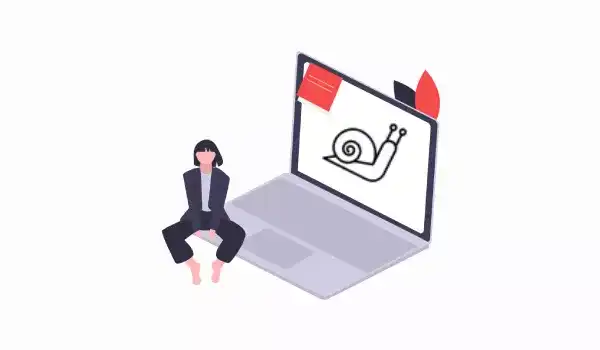
Let’s check what can be done to get rid of slow load time for the website.
What’s the solution for slow loading?
The images on the website have to be compressed. Unoptimized images are usually the most common reason behind website slowness—check the size of your images before uploading.
Try implementing cache functionalities on your website. Caching improves website performance. If you’re using WordPress CMS, you can find many cache plugins to help you improve your website's performance.
When building your website, avoid unclean coding—excessive white space, inline styling, and too many comments can make the website's stylesheet unnecessarily large.
7. Typographical Mistakes
Typography can impact the speed and comfort with which a website’s visitor reads written text. Choosing incorrect fonts and font sizes is one of the many common mistakes committed by web designers.
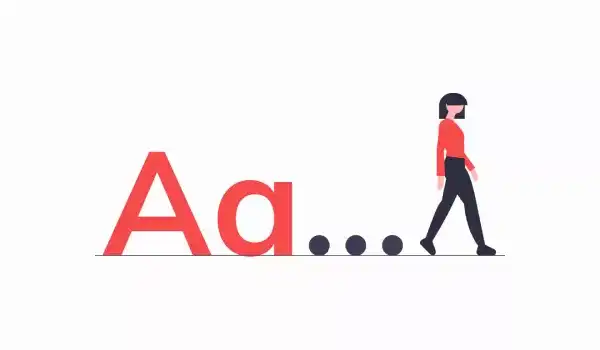
When the text on a website is difficult to read, visitors lose interest.
How can we avoid typographical mistakes on our websites?
- Choose a clear font for your website—most cursive fonts and hand-drawn scripts are not meant for websites.
- Do not use too many types of fonts—not more than three. It creates confusion and looks unprofessional.
- Do not use conflicting fonts.
- Do not use a tiny font size. Ideally, the font size shouldn’t be less than 10 pt.
- Do not minimize character spacing.
- Limit the use of text color. Avoid using blue for content text, as it is usually the color of hyperlinks.
- Check the content for spelling and grammatical mistakes.
8. Poor Visual Content
Websites with outdated styling, terrible color choices, and poor-quality images or videos are huge barriers to keeping visitors on your website.
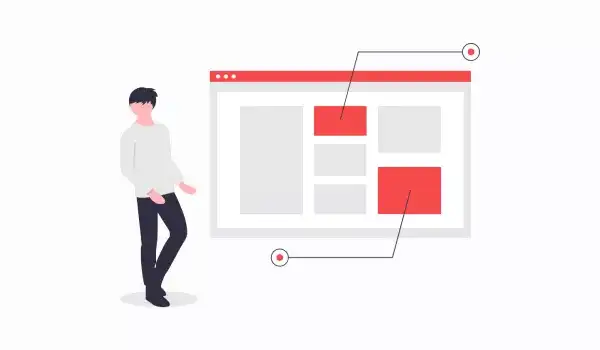
A visually appealing website generates a sense of trust and leadership.
How can we avoid the use of poor visual content?
- Be minimalist.
- Use no more than five colors in a single web layout.
- Avoid unnecessary designs.
- Use graphics that reflect the tone of your business.
9. Lack of Contact Information
This is important to build credibility and acquire leads. Otherwise, it may cost you clients.
Visitors look for a contact number, email address, or other forms of support on your website. If your website lacks easy access to this critical information, you may lose leads without realizing it.
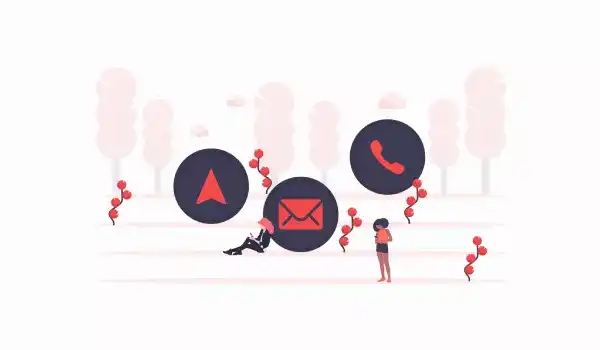
What should be done?
- The Contact Us page should be easily accessible and must be just one click away for the visitor.
- Your contact information should be placed at the bottom of the web page.
- Add chatbots for live chat.
10. Links That Open New Browser Windows
This creates a bad user experience because users don’t like dealing with multiple open tabs and may become frustrated with a disabled back button. It also consumes network bandwidth, slowing the visitor’s device.
Some visitors may not even realize a new window has opened and repeatedly hit the back button without success.
That’s not the user experience web designers strive for.
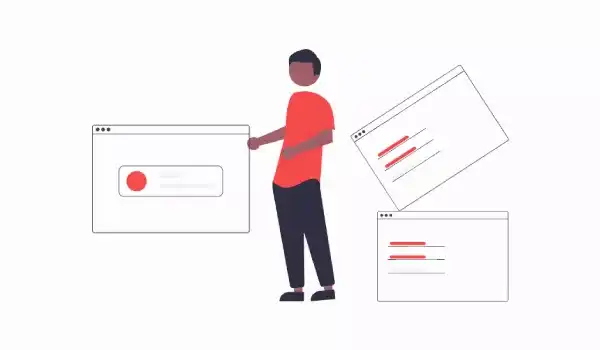
What should be done?
Most users expect the link to open in the same window, so setting your links to open in the same window is wise. Allow users the option to choose how the links should be opened on a given website.
11. The Website is Not Secure
If your website isn’t hosted securely (i.e., if its URL starts with http rather than https), this can send out a warning signal to your visitor that may drive them away.
Besides, Google favors secure websites. You may miss out on SEO ranking. Browsers like Google Chrome warn people if they are about to visit a non-secure website.
It is especially risky if the website is built to facilitate monetary transactions or collect user information.
Do not overlook website security at any cost.
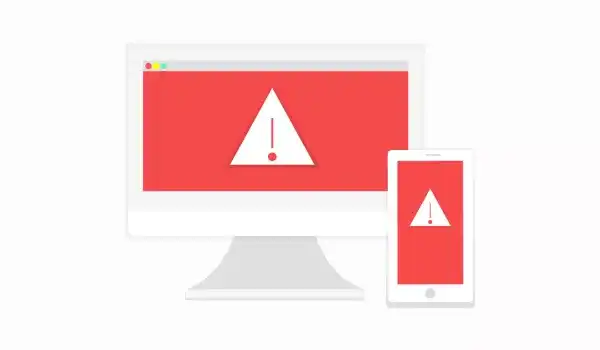
How can we avoid falling into the trap of not creating a secure website?
- Web developers should always upgrade to the latest versions of their plugins regularly.
- Obtain an SSL—Secure Socket Layer certificate.
12. Poor Search
Website visitors use search to find what they’re looking for. Search is handy for visitors who look for specific information on large and complex websites.
Visitors should be able to find exactly what they’re looking for as quickly and efficiently as possible. Bridging the gap between your visitors and the information they seek can be achieved by implementing a site search.
A good search feature can generate an increase in conversions and a decrease in the bounce rate. On the other hand, poor search functionality can negatively impact your business and drive away leads.
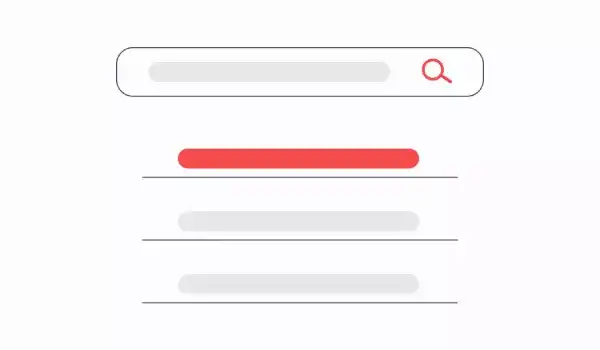
What should be done?
-
Do not make visitors search for the search box.
-
Visitors may not type your idea of a perfect keyword. In that case, the search must:
- Allow case-insensitivity by default.
- Understand singular, plural, and other variants.
- Ignore common misspellings and typos.
- Accommodate synonyms, abbreviations, and alternate terminologies.
- Recognize both American and British English.
- Handle the use of numbers and special characters.
- Handle words such as “a”, “the”, “of”, “for”, “at”, “in”, etc.
-
Encourage input by predicting search terms.
Create a High-Performance Website with Imaginovation
Remember, there is no better time to review your web strategy than right now. Start fixing the errors today and achieve even greater success!
If you’re looking for a web development company that can help you create the website you and your customers will love, then get in touch with us.
We understand the importance of good web design. We can help you build an innovative and powerful web presence for your business or even help you upgrade an existing website.
We are an award-winning web and mobile app development agency with vast experience in crafting remarkable digital success stories for diverse companies.
Ready to build an app, but not sure where to start?
We've got you covered. Click the button below to get started.

